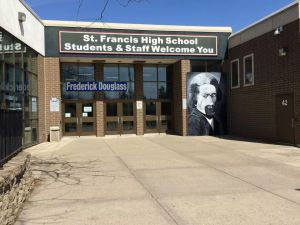On April 17, 2015, Saint Francis High School, nestled in rural Anoka County, with a student population made up of over 90% white students, was rededicated for the day and renamed Frederick Douglass High School. Students spent the day engaging in conversations about white privilege, appreciating African and Native American performances, and learning how racism is deeply embedded in our historical foundation. This was an enormous undertaking by Tim McLean, and his commitment to this project was nothing short of inspiring.

Unfortunately, since Frederick Douglass Day was a pre-planned event, many students elected to stay home that day and excluded themselves from any meaningful conversations (or difficult) conversations addressing race and racism. Despite the absence of a portion of the student population, just as the “one-and-done” model of professional development does not lead to lasting change, neither does the “one-day discussion” about racism lead to a deep commitment to equity in education.
And why does this matter in a district where less than 2% of the student population is Black? Because of horrific hate crimes happening in places where racism, subtle and overt, is allowed to flourish. The most recent in Charleston, South Carolina makes it clear that this is today’s issue, and that racism didn’t end with the Civil Rights Act. What’s disheartening about a mass shooting a thousand miles away (besides the loss of life) is the numbness our students feel as this happens over and over again. Additionally, there is a problematic dismissal of these incidents as isolated insanity from a troubled madman rather than an acknowledgement that they are a manifestation of continuing patterns of oppression.
Charleston’s proud display of a flag of treason over their statehouse sends the message to our students that in America, we still cling to a past steeped in hate and white supremacy. The dress code in the St. Francis high school student handbook makes specific reference to the Confederate flag as a “symbolic representation of intolerance.” St. Francis is no stranger to racial controversy, especially involving the Confederate flag. And it is vital that we as teachers, administrators, school board members, educational assistants, office professionals, custodians, parents, and coaches make talking about racial equality a priority. Because every day we are silent and say, “I teach math/english/art/computers…” we send the message that we accept symbols of hatred in our country. We can no longer make “essential standards” a priority before we make equity essential.
Some good resources for educators: